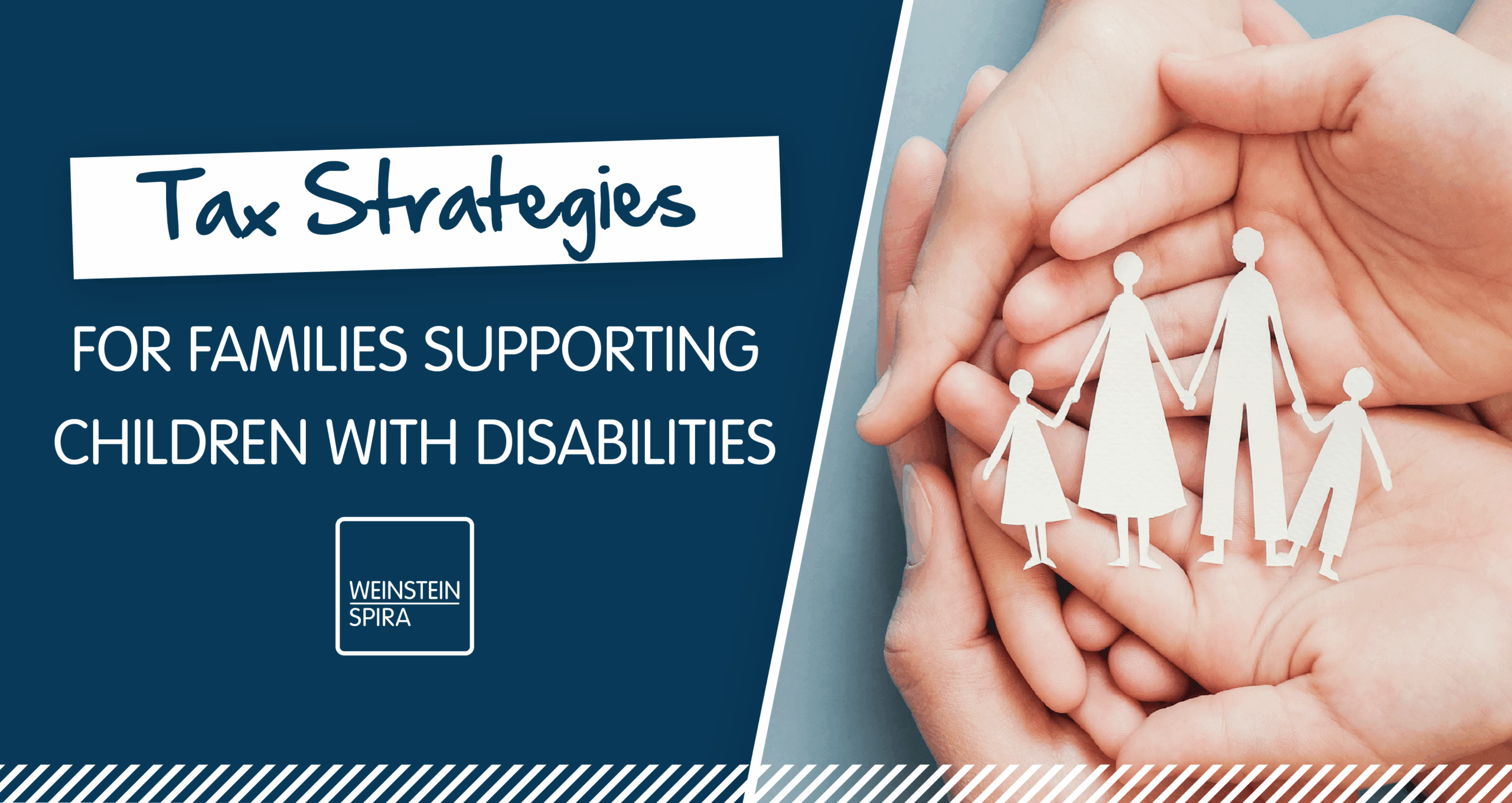As a mom of a child with disabilities, I know all too well the demands and challenges associated with raising a child who has unique needs. I also know the stress of searching for answers, advocating for your child and finding the best care and education. With many to-dos, therapies and appointments, it can be hard to find time to sit down and consider tax planning for your family and your child’s future.
The good news is that there are several options available to make supporting loved ones easier and more tax effective. In this blog, we will dive into some of the options that can help families save on taxes while preparing for significant expenses.
ABLE Accounts
The Achieving a Better Life Experience (ABLE) Act of 2014 allows states to offer tax-advantaged savings programs for eligible people with disabilities. These accounts are designed to help beneficiaries cover qualified disability-related expenses. Growth in the account and distributions are tax-free if used for expenses that are considered disability expenses such as education, food, housing, transportation, assistive technology and more.
In 2025, the annual tax-free limit is the same as the gift tax exclusion amount – $19,000. An additional benefit is that up to $100,000 of ABLE funds are not a countable resource for Supplemental Security Income (SSI). The ABLE accounts are easy to open online and there are many investment options available.
529 Plans
Alongside an ABLE account, you can also set up a 529 plan for your child. These tax-advantaged accounts are intended for qualified education expenses and are both flexible and easy to set up and contribute to. Like ABLE accounts, growth and distributions are tax-free.
You can use $10,000 annually for tuition at elementary or secondary schools. Funds from a 529 plan can also be rolled over into an ABLE account –up to the annual contribution limit if the beneficiary is the same. This provision is currently allowed through 2025, unless extended by Congress.
Health Savings Accounts (HSAs)
To help with ongoing medical expenses, you may be able to contribute to a Cafeteria Plan or a Health Savings Account (HSA). HSA’s can be used to pay qualified medical expenses and are funded with pre-tax dollars. You are also able to take tax-free distributions when used for medical expenses. To be eligible for an HSA, you must be covered under a High-Deductible Health Plan (HDHP).
In 2025, the contribution limit to an HSA is $8,550. The limit does increase with inflation, so make sure you are bumping this to maximize tax savings annually.
Flexible Spending Accounts (FSAs)
FSAs are another type of tax-advantaged accounts that are funded with pre-tax money and are typically deducted from your paycheck. There are two main types relevant to families:
One type is a Dependent Care FSA. This allows up to $5,000 to be used for daycare, before/after school care and summer day camps. It excludes regular school tuition. You can use a Dependent Care FSA in conjunction with an HSA. Generally, both spouses must work or be seeking employment to use this type of FSA.
Another type is a Health Care FSA. The annual contribution limit to a Health Care FSA in 2025 is $3,300. You cannot use a Health Care FSA if you have an HSA, but there are exceptions like a Limited Purpose FSA (for dental and vision expenses only) that can be used alongside an HSA.
Any unused funds in your FSA (Dependent Care or Health Care) at the end of the plan year will not roll forward for future use.
Medical Expense Deduction
Medical expenses exceeding 7.5% of your adjusted gross income (AGI) can be deducted if you itemize your deductions. Keep in mind that school tuition does not typically qualify as a medical expense and that you cannot double dip by deducting expenses paid with an HSA or 529 funds. Some travel expenses for medical care may qualify. You could take advantage of this deduction if you are expecting to have substantial unreimbursed medical costs.
Special Needs Trusts and Gifting
When considering the transfer of wealth to a beneficiary with disabilities, there are a few options to consider. One of these options is a Special Needs Trust. These have the goal of allowing support to be provided without interfering with an individual’s access to government benefits. These are managed by a trustee who can use the funds to cover various expenses.
Another transfer of wealth consideration is the ability for others to directly pay for medical and education expenses. The IRS allows these expenses to be paid for someone without being considered a gift for gift tax purposes if the payments are made directly to the medical care provider or the educational institution. These are in addition to the annual gift exclusion as well, so gift planning already in place can continue.
Overall, families supporting children with disabilities have access to a wide range of tax strategies and planning tools. By exploring these options in one place, you can begin identifying which approaches best align with your family’s unique needs and long-term goals.



